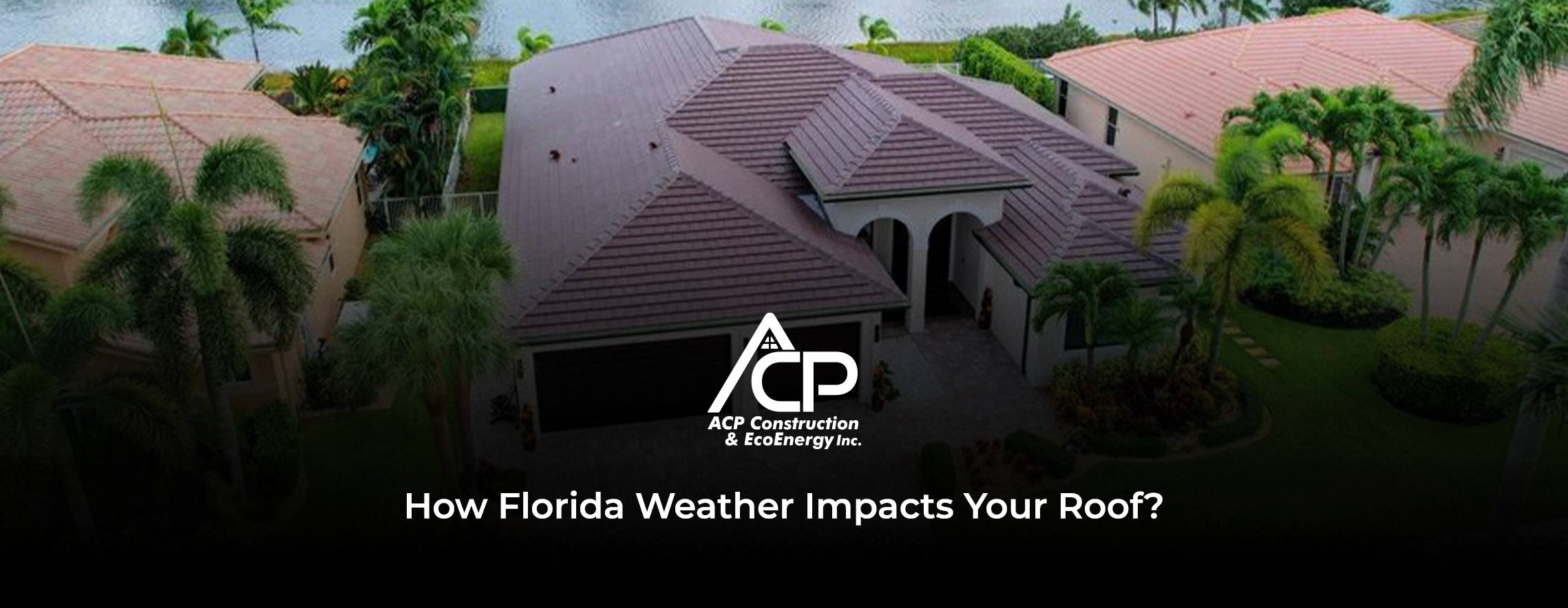Living in the Sunshine State comes with its perks, but it also means dealing with the unique challenges that Florida’s weather can pose to your home, especially your roof. As a proud homeowner, it’s essential to understand how the diverse and sometimes extreme weather conditions in Florida can impact the longevity and performance of your roofing system. In this blog, we’ll explore the various weather factors that can affect your roof and offer insights into how you can protect and maintain it for years to come.
1. Sunshine State Realities: UV Radiation and Heat:
Florida is renowned for its abundant sunshine, but that very sunshine can take a toll on your roof. The powerful UV radiation and intense heat can lead to the degradation of roofing materials over time. Asphalt shingles, in particular, may experience accelerated aging, leading to cracking, warping, or loss of granules. Regular inspections and timely maintenance can help identify and address issues before they become major problems.
2. Heavy Rainfall and Water Damage:
Florida is no stranger to heavy rainfall, especially during the hurricane season. Constant exposure to rain can lead to water infiltration, causing leaks and water damage. It’s crucial to ensure that your roof is properly sealed, with intact flashing and well-functioning gutters to direct water away from your home’s foundation. Periodic roof inspections can help detect and repair any vulnerabilities before they result in significant water damage.
3. Hurricane Force: Winds and Flying Debris:
Hurricanes are a part of life in Florida, and with them come powerful winds and flying debris. Your roof is on the front line during a hurricane, facing the risk of wind uplift and impact damage. Investing in wind-resistant roofing materials and ensuring proper installation can enhance your roof’s resilience. Regularly trim trees and secure loose objects around your property to minimize the risk of debris causing damage during a storm.
4. Humidity and Mold Issues:
Florida’s high humidity levels create an environment conducive to mold growth. Roofing materials, especially in shaded areas, can become susceptible to mold and algae infestations. Regular cleaning and preventive measures, such as installing algae-resistant shingles, can help mitigate these issues. Adequate ventilation in your attic space is also essential to prevent moisture buildup.
5. Salt Air and Corrosion:
For those living in coastal areas, the salty sea air can contribute to metal corrosion, affecting roofing elements like flashing and fasteners. Regularly inspecting and maintaining these components can help prevent corrosion-related issues. Coating metal parts with corrosion-resistant materials can provide an additional layer of protection.
In the face of Florida’s ever-changing weather, a proactive approach to roof maintenance is key to ensuring the longevity and performance of your roofing system. Regular inspections, prompt repairs, and the use of weather-resistant materials can help safeguard your home from the diverse elements that the Sunshine State has to offer. By staying ahead of potential issues, you can enjoy the comfort and security of a well-maintained roof, no matter what weather challenges come your way.


